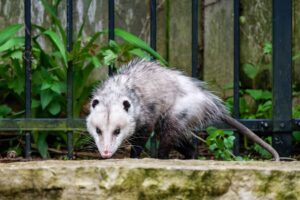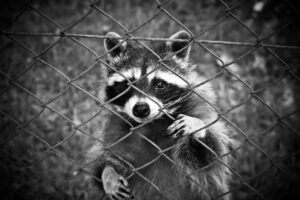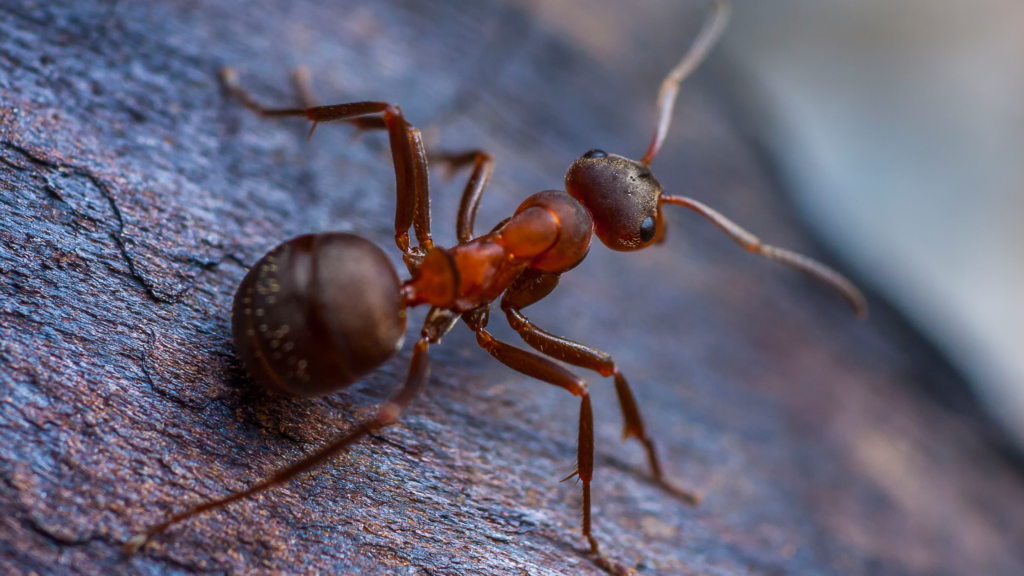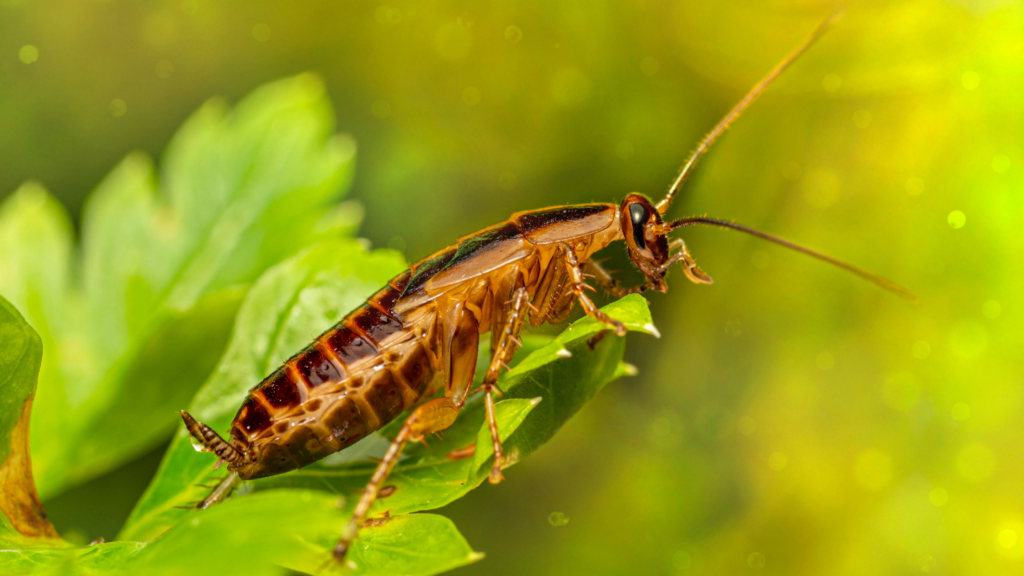Home sweet home… It’s your safe and comfortable refuge from the outside world. That is, until you’re faced with the outside world—primarily, nuisance animals—coming into your home to see what the fuss is all about.
When this happens, what are your options for wildlife removal? Keep reading for an in-depth overview of nuisance wildlife removal, in which we’ll answer questions like:
- What are examples of nuisance animals, and what problems can they cause?
- What are Florida’s regulations relating to wildlife removal?
- What are your options for nuisance wildlife removal in the state?
What Is Considered a Nuisance Animal in Florida?

For many people, the phrase “nuisance animal” is used as a catch-all term for any number of threats to their safety, comfort, or property. In rural environments, this of course extends to the types of pests that interfere with livestock or crops.
For a more specific nuisance animal meaning, here’s how the Florida Fish and Wildlife Conservation Commission (FWC) defines it:
Nuisance wildlife refers to an animal or animals exhibiting behavior that:
- Causes (or is about to cause) property damage,
- Presents a threat to public safety, or
- Causes an annoyance within, under, or upon a building.
It’s a little more nuanced than that, too. When determining what specific species or type of wildlife to consider a nuisance, the FWC states that “all of Florida’s native wildlife species serve important ecological roles.” They go on to explain that simply seeing one out of place critter—like wildlife appearing in an urban area—doesn’t always indicate a nuisance species or bring about the need for wildlife removal efforts.
What Animals Are Considered a Nuisance?
When it comes to your options for removing them from your property, it’s important to know which specific animals are classified as nuisance animals. Let’s explore a few of the most common nuisance species and the threats they pose. (Don’t worry, we’ll talk about your options for removing them next!)
Here’s a partial list of nuisance animals in Florida:
Armadillos
First appearing in Florida around 1920, armadillos are often considered to be a naturalized species in the state. Their classification as a nuisance species is a bit of a debate. On one hand, they can be beneficial since they eat nuisance insects and other small invertebrates (like grubs). At the same time, however, their appetites drive them to dig and burrow, leaving messes behind.
Bats
There probably aren’t too many things armadillos and bats have in common, but they at least have their shared appetite for insect species. Despite this, bats are considered nuisance animals since they travel in groups and leave unbelievable amounts of droppings and urine behind, which is toxic to humans.
Birds
For the most part, people don’t tend to consider birds to be nuisance animals until they become a nuisance. They’ll roost and build nests in public, urban areas—in some cases inspiring cities to install bird deterrent sound systems to output noises meant to drive them away. Like several other nuisance animal types, they might also move into an attic if it’s available.
Moles
Moles aren’t a particularly violent or aggressive species. They’re mostly content to dig tunnels and burrow around looking for worms, grubs, and insects to eat. They leave literal mole hills behind, though, wrecking lawns and gardens in the process.
Opossums
Opossums, best-known for their “playing possum” schtick, are nocturnal, which can make them a little tougher to detect. They’re usually looking for things to scavenge, like pet food or (literal) garbage. If you suspect you might be harboring an opossum, the first place to check is the attic. Learn more about Florida opossum laws.
Raccoons
Especially common in central Florida, raccoons can create a lot of messy mischief. They’re not exactly shy around humans, and they’ll make their way into your home, garage, porch, or even attic. And they definitely don’t leave these spaces any nicer than they found them! Learn more about Florida raccoon laws.
Rats
Rats are another nuisance animal you can find in homes across the entire state of Florida. And while they may be small, they tend to organize themselves into sizable colonies and reproduce at rates that would make your head spin. They’re nocturnal, always looking for food and shelter, and can invade your home through any small opening. And rodents can transmit as many as 35 different diseases to humans.
Skunks
While one skunk on the property might not necessarily seem like a nuisance, they’ll make themselves at home in dark, hidden places like under houses or sheds. There, they’ll almost certainly make messes, babies, or (probably) both.
Snakes
Of all the nuisance animals in this list, snakes likely pose the most imminent danger to humans. That being said, only 6 of Florida’s 44 snake species are actually venomous, according to the state’s FWC. Still, for many people, when it comes to snakes, it’s “better safe than sorry.”
Squirrels
Squirrels are big fans of attics—and they don’t care if they have to chew through walls, cords, and other materials to get there. Their destructive streak continues once they settle in, and they’ll often get stuck in a home’s walls, keeping homeowners on edge with the scratching and other sounds they make.
Woodchucks
Similar to moles, woodchucks love to dig and burrow, creating expansive tunnel systems that are partially below ground (usually above, as well), disrupting the terrain. As they seek out food sources, they can leave damage to yards, gardens, and other outdoor areas in their wake.
What Are the Options for Nuisance Wildlife Removal in Florida?
There are a few different ways to approach nuisance wildlife removal, but it’s usually best to leave it to the pros. At Turner Pest Control, we’ve been solving residential and commercial pest control problems for over 50 years and use the latest and most environmentally-friendly products on the market. Learn more about who we are and what we do.
Can You Shoot a Wild Animal on Your Property in Florida?
This is a bit of a loaded question, but it’s one a lot of people are asking. Especially in the heat of the moment, when you first spot a particular pest, your mind might go straight to a hasty, reactive solution. There are a few reasons why this approach isn’t ideal:
- It only addresses a single animal, not their colonies.
- It can be inhumane and even dangerous.
- You might violate Florida nuisance animal laws (like the need for a nuisance permit).
- Within some cities and residential areas, discharge of a firearm may be prohibited.
Is It Legal to Trap Animals on Your Property in Florida?
According to the FWC and in alignment with Florida Administrative Code (F.A.C.) 68A-9.010, nuisance wildlife generally “may be taken using live traps or snares, or, where allowed, firearms,” but only during daylight hours. It’s also a requirement that “all traps and snares must be inspected at least once every 24 hours.”
You’ll also need a specific permit if you’re thinking about using steel traps or a firearm and light to deal with certain (but not all) nocturnal nuisance animals like beavers, opossums, and raccoons.
Is It Legal to Kill Animals on Your Property?
According to the FWC‘s regulations, “live-captured nuisance wildlife must be released legally or euthanized humanely within 24 hours of capture or trap inspection” (though bobcats are an exception, and must be released instead of euthanized). Additionally, any “non-target wildlife” must be released immediately once trapped.
You can learn more about specific recommendations for handling captured nuisance wildlife in this FAQ, as well as specific instructions for disposing of carcasses in a safe, legal manner.
 How Do You Get a Nuisance Wildlife Removal Permit in Florida?
How Do You Get a Nuisance Wildlife Removal Permit in Florida?
There are various different types of permits that may be issued for specific circumstances. In Florida, a few of the most common include permits for the transport or possession of:
Additional permits are defined via the Fish and Wildlife Conservation Commission’s website— in very specific terms—and include:
- Gun/Light at Night Permit: Authorizes landowners to “take depredating wildlife (beaver, bobcat, fox, possum, rabbit, raccoon, otter, skunk or nutria) at night with a gun and light.”
- Deer Depredation Permit: Authorizes “the killing of deer that are causing damage to crops where less lethal means of control are either ineffective or not feasible.”
- Bear Depredation Permit: Authorizes “the lethal take of black bears that are causing property damage where less-lethal means to control the damage are either ineffective or not feasible and the FWC is unable to capture and remove the bear.”
- Steel Trap Permit: Authorizes “the holder to use padded jaw steel traps for the purpose of taking nuisance coyote, fox, bobcat, beaver, raccoon, opossum and otter.”
- Protected Wildlife Bird Permit: Prohibits “activities that may have a negative effect on protected fish and wildlife,” meaning species that have been identified as either endangered, threatened, or otherwise of special concern.
- Mallard Control Permit: Authorizes permit-holders “to lethally control and trap feral mallards” from May through August and to destroy feral mallards’ nests (year-round).
- Canada Goose Depredation Permit: Authorizes landowners to “take birds and nests to reduce depredation to commercial agricultural operations” in accordance with detailed provisions outlined within the permit itself.
You can learn more about each of these permits, and a few others, on the FWC website. We also recommend visiting their Living with Wildlife and Preventing Wildlife Conflicts page to learn more about establishing a balanced relationship between humans and wildlife. Their suggestions include some very simple resolutions, noting that “most wildlife conflicts can be resolved by making simple changes such as removing attractants.” For example, some of the things that attract raccoons—one of the most common nuisance animals in Florida—can include pet food, unsecured garbage, compost piles, and even vegetable gardens.
What Are the Advantages of Working with a Nuisance Wildlife Removal Professional?
There are several compelling reasons to leave nuisance wildlife removal services to the pros, including personal safety and potential fines when the proper permits haven’t been issued, or their terms have been violated.
- You avoid making a potentially dangerous situation more dangerous. Wild animals, especially the types we consider “nuisance animals” or “pests” can be unpredictable. They can also carry disease, so it’s best to let professionals handle the situation. Those who specialize in nuisance wildlife removal will be more familiar with the finer details of how different species like to operate, putting them at a distinct advantage.
- You avoid legal complications. Without the proper permits and a solid understanding of what interventions are—and are not—legally allowed, you run the risk of violating state/local regulations. Generally, it is prohibited for private individuals to take, remove, and kill nuisance wildlife without the necessary permits.
- You might not successfully eradicate the nuisance species from your property. Many nuisance animals are nocturnal, and many are remarkably stealthy. Additionally, a large number of them tend to travel in large colonies and reproduce at pretty alarming rates. The risk here is that you might go to great lengths only to realize you haven’t solved your issue fully and may still need some expert support.
For these reasons and more, it’s generally not recommended that you attempt nuisance wildlife removal on your own. Instead, you should seek out professional services in your area.
Who Does Nuisance Wildlife Removal in Florida?
You could start your search by typing something like “nuisance wildlife removal near me” into a search engine—or you can start with Turner Pest Control. In the business for over 50 years, we offer a wide range of services, including:
- Bed Bug Treatment
- Lawn & Outdoor Care
- Mosquito Control
- Pest Control,
- Rodent Control
- Termite Control
- Wildlife Removal
It’s our demonstrated experience and innovative approaches to pest control that keep our customers coming back. Here’s what you can expect from the Turner Pest Control experience:
- We’ll arrive on-time and maintain a professional appearance.
- We’ll perform a thorough inspection of your home/property.
- We’ll design and recommend a targeted treatment program tailored to your needs.
- We’ll clearly explain what services we’ll be providing and what to expect.
- We’ll respect your home and property, protecting your investment.
- We’ll provide unparalleled customer service.
If you’re in of need wildlife removal services in Jacksonville, Orlando or Tampa (or anywhere else in Florida we offer wildlife removal), contact us immediately.
Ready to get started? So are we! Head to our website to find a location near you, schedule a free inspection, or learn more about our approach to residential pest control and wildlife removal.
READY TO GET STARTED?
Fill out Turner Pest Control’s request form to take the next step toward a free inspection.



